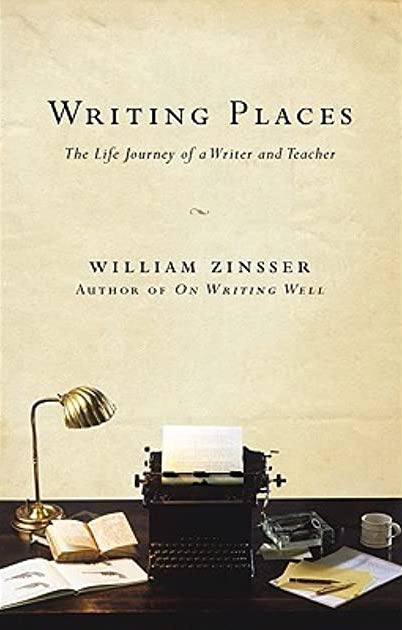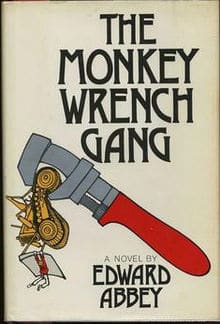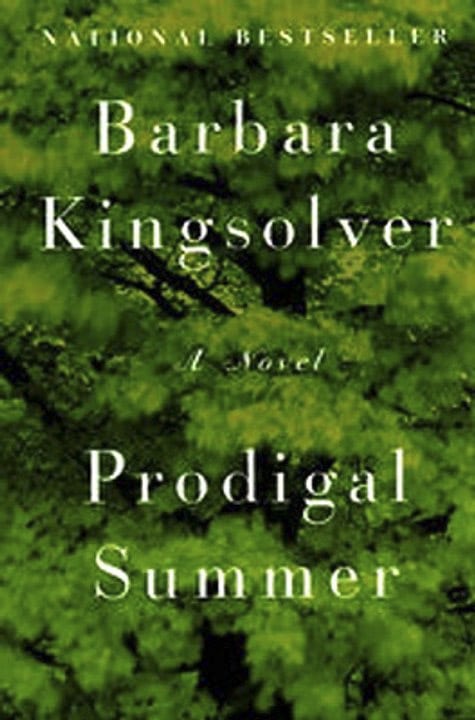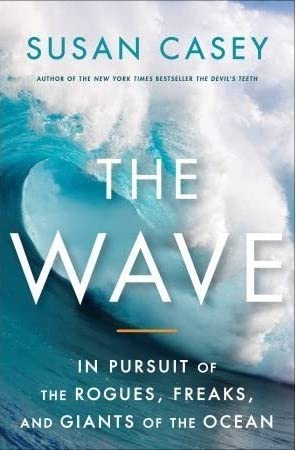Do I think you care about what books I have read and am planning to read next? Of course not. But do I secretly hope that someone will pay attention and actually get some ideas for books to read from these posts? Sure. I’d even welcome some return comments like, “hey, since you read XXX, you might like YYY…” But anyway, continue reading if you want, or jump on to another website if you’d rather.
But I’ll just say from the outset, that of all of these last-five-next-five posts I’ve done, this is one of the best, in that three of the books on this list are some of my all-time favorites. 2020 has been a spectacular year for me so far, at least in terms of reading.
So anyway, here’s the list—these are the last five books I’ve read, followed by a guess at the next five:
 Writing Places: The Life Journey of a Writer and Teacher. By William Zinsser. Near the end of 2019, I read a lot of books about writing. This one in particular had interested me because Zinsser wrote a book that I read years ago and still have a copy of: On Writing Well, a classic, concise guide to nonfiction writing in all its forms.
Writing Places: The Life Journey of a Writer and Teacher. By William Zinsser. Near the end of 2019, I read a lot of books about writing. This one in particular had interested me because Zinsser wrote a book that I read years ago and still have a copy of: On Writing Well, a classic, concise guide to nonfiction writing in all its forms.
Writing Places is a memoir, of sorts, in which Zinsser describes the various places he’s lived and worked over the years, as well as the process of creating On Writing Well, and revising and expanding it for multiple later editions.
It was an interesting premise, but it became a little tiresome by the end.
My Goodreads rating: 3 stars.
 The Monkey Wrench Gang by Edward Abbey. You have a rough plan for what books you’re going to read next; you even write it down, make at least that level of commitment.
The Monkey Wrench Gang by Edward Abbey. You have a rough plan for what books you’re going to read next; you even write it down, make at least that level of commitment.
And then your father dies and all planning is thrown out the window.
All of a sudden, instead of reading the books I’d intended, I just wanted to flee from civilization, get out and immerse myself in nature. Commune with the trees and the rocks and the waves and try to figure out what really matters.
And so with my reading, I went outside. First up, this novel by Edward Abbey. I’d never read any of his books before, but his Desert Solitaire has been on my to-read-soon list for a while. The Monkey Wrench Gang is about a group of eco-warriors who use stealth, guile and local knowledge to sabotage construction projects that were destroying the natural beauty of the Southwest. Roads, bridges, power plants: anything that would mar the land they love. Their ultimate target: the Glen Canyon Dam, which backed up the Colorado River and inundated one of the most beautiful canyons in the world.
It’s a rollicking good read, and exactly what I was looking for.
My Goodreads rating: 5 stars.
 The Emerald Mile: The Epic Story of the Fastest Ride in History through the Grand Canyon by Kevin Fedarko. For my next book, I didn’t have to travel far, in terms of geographic setting, from the previous one. The Emerald Mile is predominantly set a few miles down the Colorado River from the Glen Canyon Dam. It’s the story of an attempt at a speed record for paddling the length of the Grand Canyon. The attempt took place in 1983, during an extraordinary high-water event in the canyon.
The Emerald Mile: The Epic Story of the Fastest Ride in History through the Grand Canyon by Kevin Fedarko. For my next book, I didn’t have to travel far, in terms of geographic setting, from the previous one. The Emerald Mile is predominantly set a few miles down the Colorado River from the Glen Canyon Dam. It’s the story of an attempt at a speed record for paddling the length of the Grand Canyon. The attempt took place in 1983, during an extraordinary high-water event in the canyon.
But this book covers a lot more ground than just the speed-record attempt. It details the history of guided river tours in the canyon—in both the traditional rafts and the specially designed wooden dories that the elite guides use—as well as the history of the Colorado River itself, its exploration and eventual damming. And a large part of the book covers the dramatic events at the aforementioned Glen Canyon Dam, which faced a weeks-long crisis as the 1983 flood was unfolding. The book is a wild ride.
My Goodreads rating: 5 stars.
 Prodigal Summer by Barbara Kingsolver. If you’re looking to immerse yourself in nature. Barbara Kingsolver is an author you should know. A few years ago, I happened onto her novel Flight Behavior, about an unexpected migratory change of monarch butterflies, and I loved it. I’ve since read The Poisonwood Bible and The Bean Trees, and she has become one of my favorite authors. She has a very comfortable writing style, and her work is infused with an appreciation for the natural world. Never more so than in Prodigal Summer, written in 2000.
Prodigal Summer by Barbara Kingsolver. If you’re looking to immerse yourself in nature. Barbara Kingsolver is an author you should know. A few years ago, I happened onto her novel Flight Behavior, about an unexpected migratory change of monarch butterflies, and I loved it. I’ve since read The Poisonwood Bible and The Bean Trees, and she has become one of my favorite authors. She has a very comfortable writing style, and her work is infused with an appreciation for the natural world. Never more so than in Prodigal Summer, written in 2000.
For the setting of this novel, we leave the Southwest and camp out in the Appalachian Mountains. The book tells the story of three characters—a Forest Service ranger who lives in a mountain cabin; an elderly, set-in-his-ways man who is trying to create a new strain of chestnut trees; and an academic scientist who accidentally becomes the reluctant owner of a farm. Their stories intertwine somewhat by the end of the book, but all three stories are compelling on their own.
Kingsolver has a gift for capturing the natural world in all of its beauty and cruelty, and each of her books is a unique, eye-opening experience.
My Goodreads rating: 5 stars. I’d give it 10 if I could.
 The Wave: In Pursuit of the Rogues, Freaks and Giants of the Ocean by Susan Casey. Back to nonfiction for this one, but still in nature. This nature, though, is in the ocean, and specifically the very largest waves in the ocean.
The Wave: In Pursuit of the Rogues, Freaks and Giants of the Ocean by Susan Casey. Back to nonfiction for this one, but still in nature. This nature, though, is in the ocean, and specifically the very largest waves in the ocean.
What human being has ever encountered an ocean and not been entranced by the sight of waves breaking on a beach? Wondered, where do they come from? How do they gain all of that energy?
There was an interesting comparison in The Emerald Mile, in fact, that may have led me to this book. It compared whitewater waves in a river with ocean waves. One might think that water is water, but here’s the thing: in river rapids, when you see a large wave, the wave really isn’t moving, but the water is. In the ocean, on the other hand, the wave is very obviously moving, but the water itself, except in the very top of wave as it’s breaking, really isn’t moving that much at all.
Anyway, this book looks at these rogue waves both from the point of view of scientists who study them, and surfers who try to find, ride and survive them. The scientists basically know very little about what causes the rogue waves that can sink large cargo ships. The surfers seem to know more; at least they have a good idea when and where the huge waves are going to be. The surfers’ stories make up the bulk of this book, but it’s all fascinating. In the end, I felt that the pacing of the book wasn’t quite what it could have been; there wasn’t really a big climactic scene like in, say, The Emerald Mile. Still an enjoyable read, though.
My Goodreads rating: 4 stars.
The Next 5
And now here’s where I get to list the books I plan to read next, something that never, ever, plays out like I expect it to. What do you read during a pandemic? I’ve already read Love In The Time Of Cholera. I honestly have no idea what books I’ll pick out over the next few months, but this guess is as good as anything, I guess.
Faceless Killers by Henning Mankel
Consider the Lobster by David Foster Wallace
The Bluest Eye by Toni Morrison
The Signal and the Noise by Nate Silver
Sundog by Jim Harrison
Looking Back
Here are previous last-five-next-five-books lists on Shoulblog:


March 23, 2020
A good list. Thanks! I think I’ll check out Prodigal Summer. I loved The Lacuna.
Henning Mankel is on my bookshelf. He never fails. I tend to read him when I am depressed because, as everyone knows, misery loves company. And depression is Wallander’s middle name.